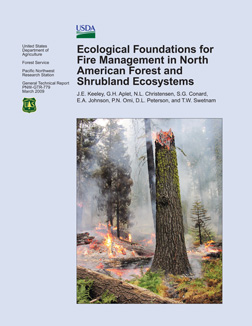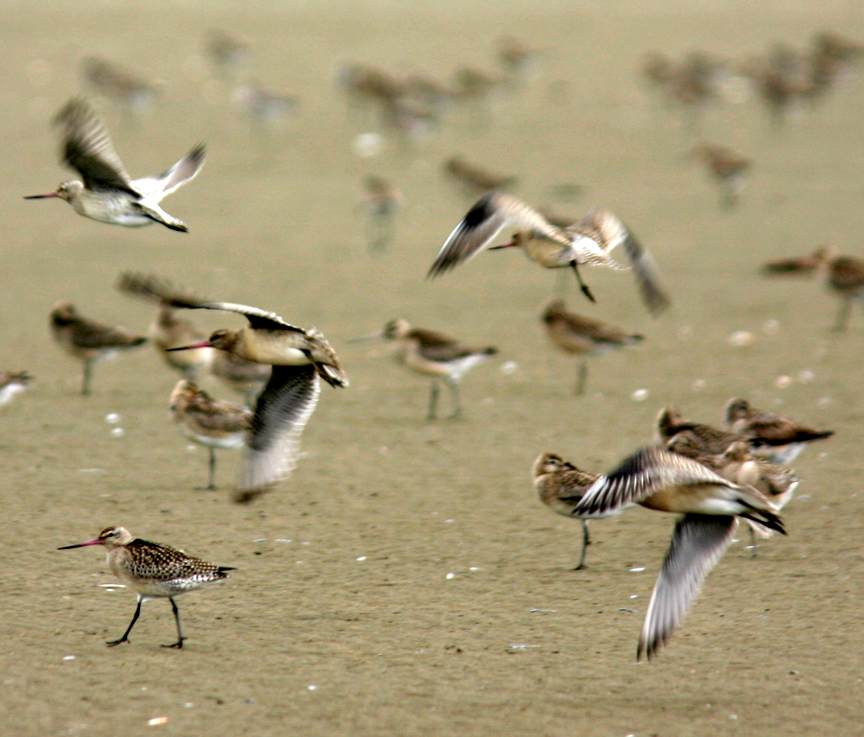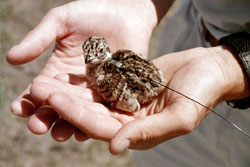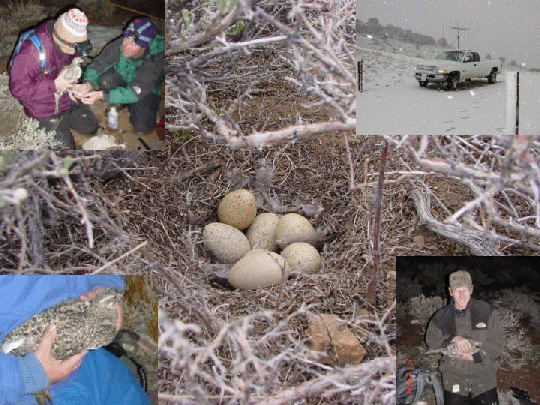- Home
- About S&T
- Taxa/Organisms
- Ecosystems
- Issues
- Methods & Tools
- Reports & Publications
- Location
- Search
Publisher: USGS | Science Center: Forest and Rangeland Ecosystem Science Center (FRESC, Corvallis) | Format: URL
sagemap.wr.usgs.gov — SAGEMAP - Spatial Data for Sage Grouse and Shrubsteppe Systems is needed for research and management of sage grouse and sagebrush steppe habitats in the western United States. This website is a product of the NBII Great Basin Information Project. Find out more from this resource on sage grouse as endangered species, habitat information, More...

March 2009 | Publisher: USGS | Science Center: Western Ecological Research Center (WERC, Sacramento) | Format: .PDF
www.werc.usgs.gov — Fire occurs in many North American ecosystems, and most of these systems are resilient to fires that occur within a broad range of variability in frequency and intensity. In a recent USFS publication (General Technical Report PNW-GTR-779, ), USGS scientist Jon Keeley led a team of scientists from various agencies and academic institutions in More...

November 2007 | Publisher: Academic Institution (Sage-grouse Restoration Project (SGRP), Utah State University) | Format: .PDF
sgrp.usu.edu — The greater sage-grouse (Centrocercus urophasianus) and the Gunnison sage-grouse (C. minimus) are species of concern because of their population declines and shrinking geographic distributions. Of continuing interest is the question of population abundance and trends. This publication answers the questions that deal with sage-grouse population, More...

July 2007 | Publisher: Other (Ecological Society of America (ESA) Journal) | Format: URL
www.esajournals.org — Periodic wildfire maintains the integrity and species composition of many ecosystems, including the Mediterranean-climate shrublands of California. However, human activities alter natural fire regimes, which can lead to cascading ecological effects. Increased human ignitions at the wildland-urban interface (WUI) have recently gained attention, but More...

2006 | Publisher: USGS | Science Center: Fort Collins Science Center (FORT, Ft. Collins) | Format: URL
www.fort.usgs.gov — Although the monitoring of black-footed ferret (Mustela nigripes) populations following reintroductions has not been haphazard, several ferret recovery groups since 1994 have recommended development of uniform standards prescribing minimum methods, intensities, and frequencies of monitoring that would provide data on population size, mortality More...

1999 | Publisher: USGS | Science Center: Fort Collins Science Center (FORT, Ft. Collins) | Format: URL
www.fort.usgs.gov — A quasi-experimental situation exists in Rocky Mountain National Park, where elk (Cervus elaphus) populations have increased 3-fold since 1968 following their release from artificial controls within the park. Increases in elk habitat use and decreases in deer habitat use were observed. Significant increases in cover of mosses and lichens occurred More...

Publisher: USGS | Science Center: Forest and Rangeland Ecosystem Science Center (FRESC, Corvallis) | Format: URL
fresc.usgs.gov — Periodic fire is a natural part of sagebrush steppe ecosystems in the Great Basin. However, a suite of human-caused factors has dramatically changed fire regimes in many of these systems. Decades of fire suppression and livestock grazing have produced dense, single-aged sagebrush stands and invasion by cheatgrass (Bromus tectorum) has increased More...

Publisher: USGS | Science Center: Alaska Science Center (ASC, Anchorage) | Format: URL
alaska.usgs.gov — This web resource provides information concerning the on-going Research at the USGS Alaska Science Center on birds and avian influenza (bird flu). The site links to quick facts, on-going research, workshop results, monitoring and surveillance, guidelines on how to safeguard against avian influenza, publications and reports, migratory bird More...

Publisher: USGS | Format: URL
www.usgs.gov — Long-term trends in landscape conditions have significantly reduced sagebrush habitat and populations of greater sage-grouse, according to a new study examining the bird's chances of survival. The species, which is being considered for listing under the federal Endangered Species Act, has experienced significant population declines in recent More...

Publisher: USGS | Science Center: Fort Collins Science Center (FORT, Ft. Collins) | Format: URL
www.fort.usgs.gov — Sagebrush ecosystems are diverse habitats found throughout western North American that support a variety of flora and fauna. Home to unique wildlife such as Sage-grouse, Sage Thrashers, Brewer's Sparrows, Ferruginous Hawks, and pygmy rabbits, these ecosystems have undergone intense changes since the time when millions of bison roamed the plains. More...

Publisher: USGS | Science Center: Western Ecological Research Center (WERC, Sacramento) | Format: URL
www.werc.usgs.gov — This resource provides an overview of the research on ways to prevent invasive annual grass invasions and restore invaded habitats, which has independently and repeatedly been identified by all land management agencies as a top national research priority. Annual grasses have invaded a number of shrub and forest ecosystems in western North America More...

Publisher: USGS | Science Center: Western Ecological Research Center (WERC, Sacramento) | Format: URL
www.werc.usgs.gov — The sage grouse that occupies the Mono County area is described as the eastern subspecies of the greater sage-grouse (Centrocercus urophasianus urophasianus). The greater sage-grouse (Centrocercus urophasianus) is found in sagebrush (Artemisia spp.) dominated habitats across western North America. Sage grouse populations have declined dramatically More...
